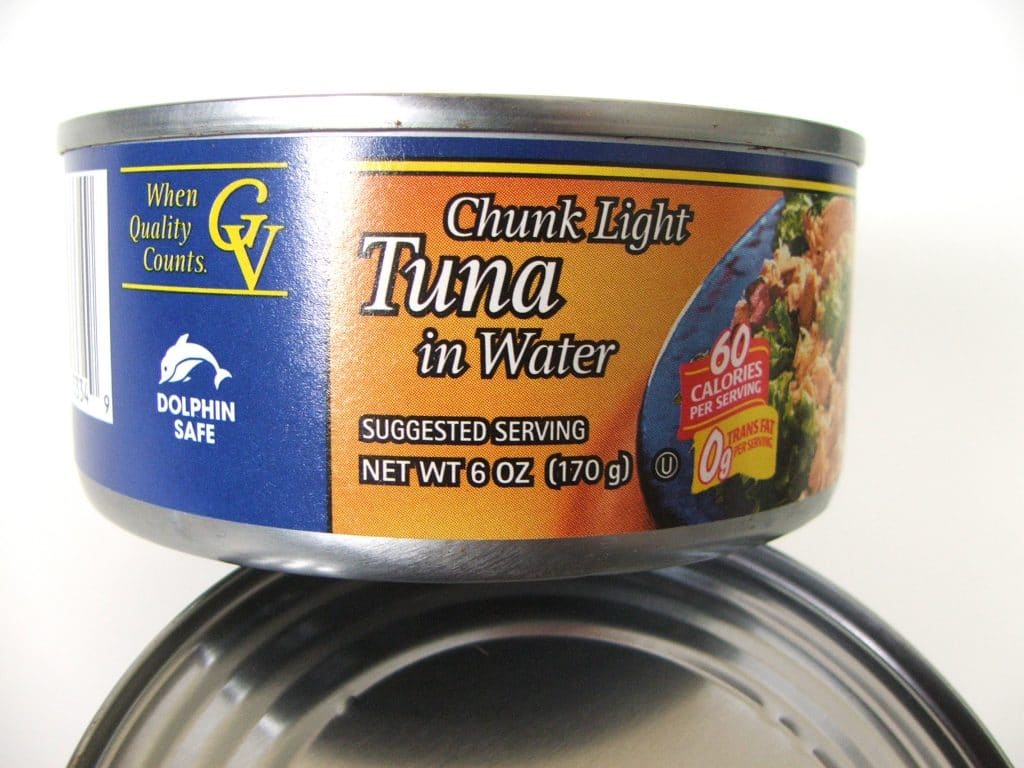
Tuna and gout: Gout patients are usually advised to avoid tuna to help prevent recurring gout. But tuna is a highly nutritious fish and very popular. Do you really need to avoid it?
Got gout and wondering whether you can still eat tuna?
Nearly everyone loves tuna, especially canned tuna. In fact canned tuna is the second most popular seafood product in the U.S. after shrimp. And the folks in the European Union consume some 51% of the world’s total canned tuna. Source.
But what if you’ve been diagnosed with gout? Is it safe to continue eating it?
To answer that we need to look at tuna’s purine content…
Purines and Uric Acid
Purines are chemical compounds that exist in our bodies’ cells and in the cells of the food we consume, with different foods having different purine concentrations. When your body metabolizes purines it produces uric acid, a powerful antioxidant that helps to neutralize free radicals that can damage your cells, proteins and DNA.
Under normal circumstances your kidneys remove excess uric acid from the bloodstream and excrete it from the body in urine, leaving healthy concentrations circulating in the bloodstream to get on with scavenging those nasty free radicals.
But, if too much uric acid is being produced in your body, or your kidneys aren’t excreting enough, unhealthy levels of uric acid can build-up in the bloodstream. And, as you probably already know, too-high blood uric acid levels can eventually lead to the depositation of needle-like monosodium urate crystals in the joints and associated tissue, leading to a painful gout flare.
Purine Content of Tuna
Tuna is recognized as a high-purine fish, that is to say, the purines in tuna, as they are metabolized by the body, produce more than 200 mg of uric acid for every 3.5 oz (100 g) of tuna consumed.
So us gout sufferers generally are advised to avoid tuna.
However, some experts believe that the increased gout risk has to be balanced against tuna’s overall health benefits. For example, this from the Mayo Clinic website:
Seafood. Some types of seafood — such as anchovies, shellfish, sardines and tuna — are higher in purines than are other types. But the overall health benefits of eating fish may outweigh the risks for people with gout. Moderate portions of fish can be part of a gout diet.
So, just what is so special about tuna?
Nutritious Tuna
According to Jessica Bruso writing in SFGATE a 3-ounce serving of chunk light tuna canned in water contains:
- 99 calories
- 22 g of protein
- 0.7 g of fat
- 11.3 mg of niacin (57% Daily Value (DV))
- 2.5 micrograms of vitamin B-12 (42% DV)
- 154 international units (IU) of vitamin D (25% DV)
- 0.3 mg of vitamin B-6 (15% DV)
- 139 mg of phosphorus (14% DV)
Furthermore, tuna is an excellent source of omega-3 fatty acids with concentrations varying between 80mg and 240mg per serving across different types of tuna.
Altogether, then, tuna’s nutrition profile can deliver some really strong health benefits…
Potential Health Benefits of Tuna
According to an article published in Consumer Reports in July 2009, eating tuna (and other fish) may help to lower your risk of:
- heart disease
- stroke
- cognitive impairment
- eye disease
- mood problems
- even some cancers
And other experts agree.
But there’s an elephant in the room; mercury….
Mercury in Tuna
Tuna generally has higher concentrations of this toxic heavy metal than other fish types such as halibut, salmon, tilapia, mackerel, sardine, oysters, lobster, and scallops, to name but a few.
Mercury has toxic effects on the nervous, digestive and immune systems, as well as on the lungs, kidneys, skin and eyes. So there are some well-founded concerns about the regular intake of tuna.
To make matters worse, some types of tuna have higher concentrations than others, so that a single serving of some types can surpass the maximum amount of mercury you can safely consume in a whole week.
But, mercury aside, it is a highly nutritious fish that can support good health and wellbeing so, once again, we need to look at it in the round.
How Much Tuna is Safe?
The first thing to note is that the risk from mercury is cumulative. In other words, consuming it frequently and regularly is very high risk. However, if it doesn’t form a major part of your diet and is consumed occasionally, then the risk can be reduced considerably.
For example, the authors of a 2015 study published in the journal Environmental Research concluded that:
…while a weekly meal of canned tuna presents very low risk, raw, boiled, and grilled tuna consumption should not exceed a monthly meal, at least, for pregnant and nursing women.
In other words, eating no more than a 3.0 oz (85 g) serving of canned tuna once a week poses a very low risk for mercury. And, since it has much less than half the mercury of canned white or albacore tuna, it’s best to stick to canned light tuna, also sold as chunk light tuna. But stay away from raw, boiled, grilled, or otherwise cooked tuna. At the very least, limit its consumption to one 3.5 oz (100 g) serving per month.
So can tuna be part of your gout diet?
Both canned tuna (in oil or water) and fresh tuna are high in purines, so normally need to be avoided if you have gout.
But tuna is an excellent source of omega-3 which experts have linked to a lower risk of heart disease, stroke, cognitive impairment, eye disease, mood problems, and even some cancers.
And, not only that, at least one study has linked omega-3 polyunsaturated fatty acid to a lower risk of recurrent gout flares.
So, if we can cut right down the amount of tuna we eat, it should be possible to strike a balance between tuna’s benefits and it’s purine and mercury risks.
In terms of mercury, we’ve seen from that 2015 study that it’s very low risk to consume a maximum of 1 x 3.0 oz (85 g) serving of canned tuna once a week. In terms of its purine content, we’ve seen from the Mayo Clinic article that it’s safe to eat moderate amounts, which a 3.0 oz (85 g) serving once a week certainly equates to.
On balance, then, it may be possible to enjoy the health benefits of tuna, whilst seriously reducing the risks posed by purines and mercury, by consuming no more than 1 x 3.0 oz (85 g) serving of canned light tuna per week absolute max., for example, in a sandwich, baked potato, or salad.
Personally, I only eat canned tuna occasionally, maybe 2 or 3 times a month, usually in a sandwich or baked potato, and haven’t had any problems. I never eat raw or cooked tuna though, simply because I’ve never really liked it. I’ve always preferred canned tuna in water.



